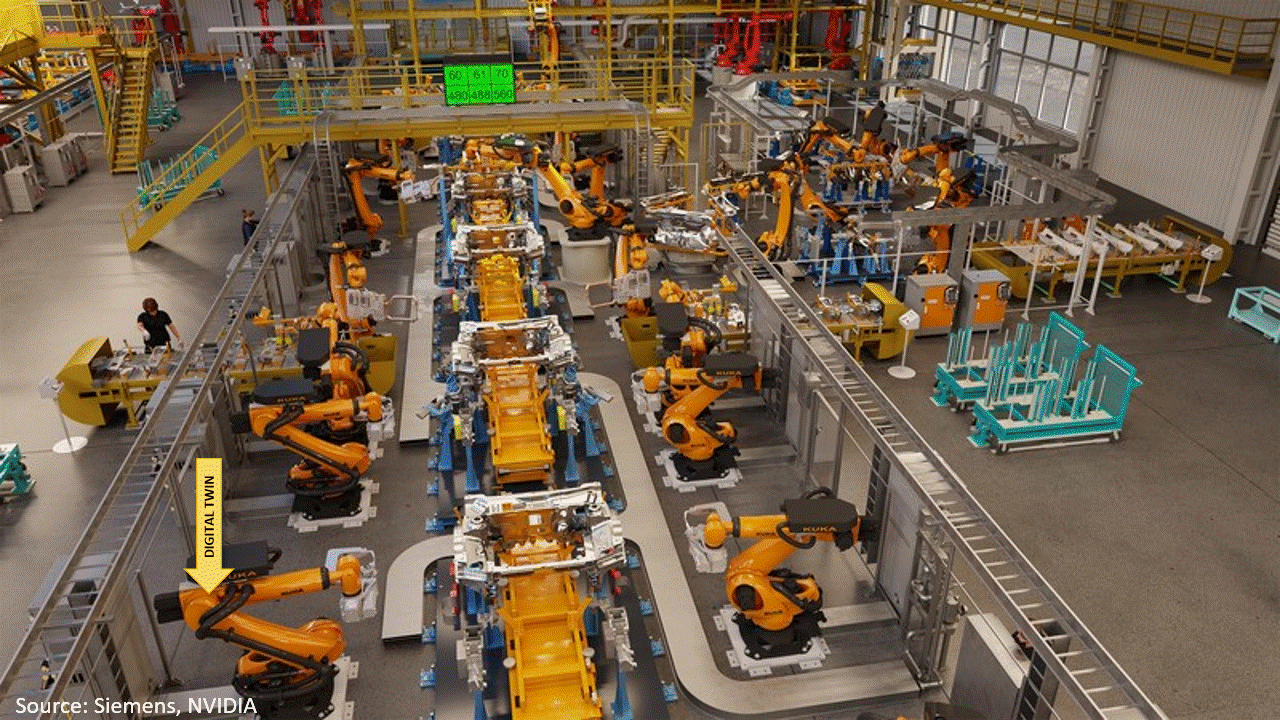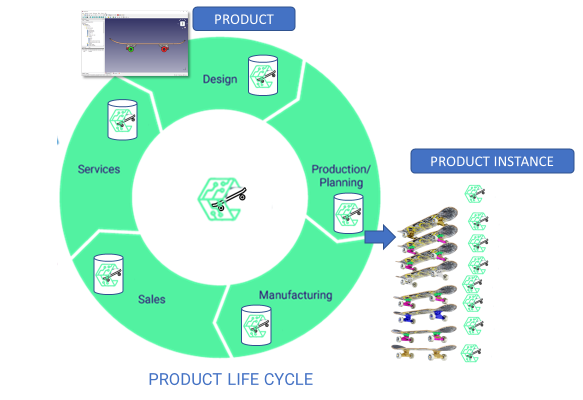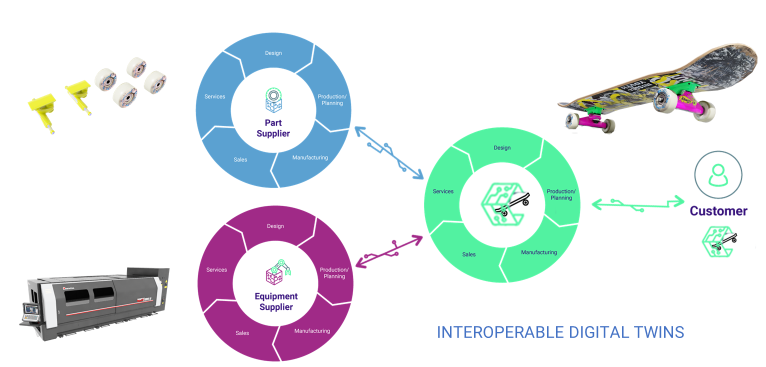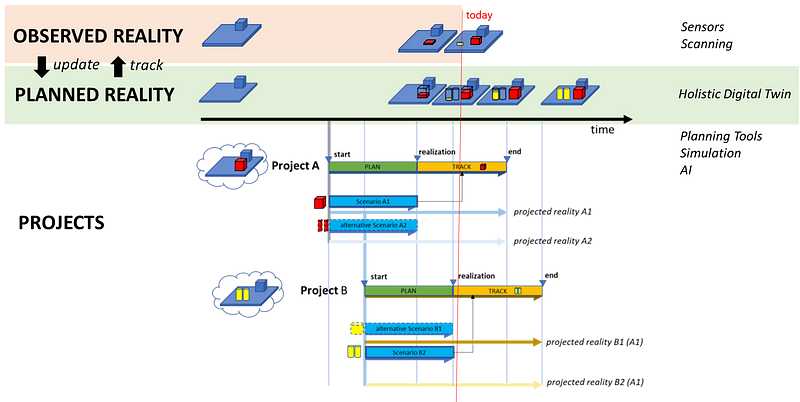The Industrial Metaverse
Definitions of the Metaverse
In his book "The Metaverse," Matthew Ball delineates what I'd term the Social Metaverse as:
"A massively scaled and interoperable network of real-time rendered 3D virtual worlds that can be experienced synchronously and persistently by an effectively unlimited number of users with an individual sense of presence, and with continuity of data, such as identity, history, entitlements, objects, communications, and payments."
For the Industrial Metaverse, we propose the following definition:
"A global scale network of enterprises utilizing interoperable digital twins of products and processes across the product life cycle and throughout value chains to design, simulate, and produce perfect products without waste."
Digital Twins
The digital twin is a digital asset tethered to a real-world product.
 |
|---|
| Digital twins in the Industrial Metaverse |
The Industrial Metaverse is built on digital twins.
Digital Factory
The depicted production environment is a digital twin of the real manufacturing setup, comprising numerous interconnected digital twins of real-world assets like robots, fixtures, and even human workers.
Digital Twins along the Product Life Cycle
 |
|---|
| Digital twins products and instances |
Your team at "Skateboards Inc." navigates through various stages, from design to sales, engineering, production planning, and manufacturing, each enriching the digital product twin to facilitate communication, collaboration, and optimization.
Digital Twins across Value Chains
 |
|---|
| Digital twins ecosystem |
Interoperable digital twins not only thrive along their product life cycle but also across value chains encompassing multiple organizations. This unlocks potential in all workflows and operational activities, leading to more sustainable processes across entire value chains.
Observed & Planned Reality, Projects & Scenarios
 |
|---|
| Reality Layers |
The Industrial Metaverse introduces an additional layer of reality, encapsulating both historic and future states of all digital twins it contains, which I term as the "Planned Reality" layer. This layer may be updated from the real-time layer, dubbed "Observed Reality."
Conclusion
The Industrial Metaverse empowers organizations to strive for sustainable products and processes by leveraging holistic digital twins across the product life cycle and throughout value chains.